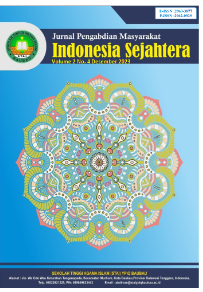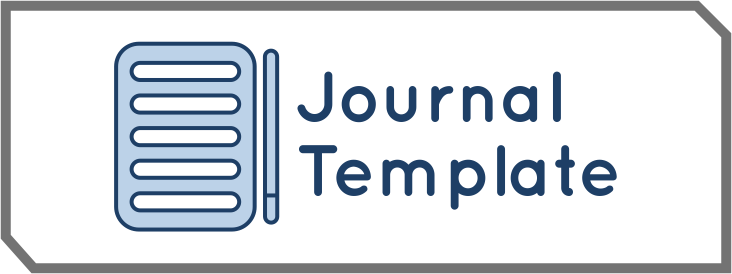Tradisi Qunutan di Pertengahan Ramadhan
(Studi Living Hadis di Kecamatan Kasemen, Kota Serang, Banten)
DOI:
https://doi.org/10.59059/jpmis.v4i1.2176Keywords:
Living Hadith Study, Month of Ramadhan, Qunutan TraditionAbstract
The aim of this research is to get a clear picture of the meaning of each tradition that is still carried out by the Al-Ikhlas prayer room in Kasemen until now. The explanation of this research is to describe the meaning and motive for implementing Qunutan in the Al-ikhlas prayer room. This research uses functional structure research methods. The results of this research show the meaning of the Qunutan tradition in the Al Ikhlas prayer room, namely as a very special form of time to pray and ask for forgiveness and blessings from Allah SWT. Qunut in the month of Ramadan is usually related to prayers performed on the night of Lailatul Qadar, one of the most special nights in the month of Ramadan, as it involves participation in joint religious activities such as evening prayers, reading the Koran, and praying. Many people also do good deeds, such as giving alms or doing good to others, and guidance from Allah. During the last 10 nights of Ramadan, especially in searching for Laylatul Qadar, the Kasemen people often strengthen the practice of qunut as part of their intensive worship. The practice of qunut in the month of Ramadan is an important part of Muslims’ efforts to get closer to Allah and obtain blessings in the holy month of Ramadan which is considered full of grace.
References
Abdul Mustaqim, dkk. (n.d.). Paradigma interaksi dan interkoneksi dalam memahami hadits. Yogyakarta: Sukses Offset. Retrieved February 26, 2025, from https://scholar.google.com/scholar?hl=id&as_sdt=0%2C5&q=Abdul+Mustaqim
Alief, F. (2023). Wawancara bentuk syukur.
Al-Mutsla, M. Y. (2020). Nuzulul Qur’an dan asbabun nuzul. Jurnal Stain Majene. Retrieved February 26, 2025, from http://jurnal.stainmajene.ac.id/index.php/almutsla/article/view/33
Bapak Haji Safari. (2023, December 3). Wawancara aktivitas masyarakat.
Hanafi, M. (2013). Tradisi shalat hajat di bulan Suro pada masyarakat Dukuh Teluk Kranggilan Gantiwarno Klaten (studi living hadits). Retrieved from https://digilib.uin-suka.ac.id/id/eprint/7673/
Jafar, T. (2023, December 20). Wawancara kesimpulan pemaknaan.
Kasemen, Serang. (n.d.). Wikipedia bahasa Indonesia, ensiklopedia bebas. Retrieved February 25, 2025, from https://id.wikipedia.org/wiki/Kasemen,_Serang
Khairul Anwar, M. (2015). Living Hadits. Jurnal IAIN Gorontalo, 12(1), 75. Retrieved February 25, 2025, from https://www.google.com/search?q=M.+Khairul+Anwar
Moh. Yani Hasan. (2023, December 19). Wawancara momen bersedekah [Video recording].
Muhammad A-Fatih Suryadilaga. (2013). Living Hadits dalam tradisi sekar makam. Jurnal Al-Risalah, 13(1). Retrieved from https://www.google.com/search?q=Muhammad+A-Fatih+Suryadilaga
Muhammad Dayat. (2023, December 11). Wawancara terkait hadis.
Muhammad Safari, S. (2023, December 3). Wawancara masyarakat terhadap hadis.
Pramusti, S. A., & Syah, S. F. S. (2023). Kesan perbedaan beribadah yang dirasakan santri berlatar belakang Muhammadiyah di pondok pesantren NU selama bulan Ramadan: Studi kasus pondok pesantren Darul Abror dengan pendekatan fenomenologi agama. Musala: Jurnal Pesantren dan Kebudayaan Islam Nusantara, 2(1), 1–21. https://doi.org/10.37252/jpkin.v2i1.376
Soetono. (2011). Pemberdayaan masyarakat: Mungkinkah muncul antitesisnya?. Yogyakarta: Pustaka Pelajar. Retrieved February 25, 2025, from https://scholar.google.com/scholar?hl=id&as_sdt=0%2C5&q=Soetono
Syafii, S. S. (2024). Studi komparasi antara pemahaman MTA (Majlis Tafsir Al-Quran) dalam menyikapi hadits tentang malam lailatul qadar dengan pemahaman Ahlu Sunnah. Repository STDIIS. Retrieved February 26, 2025, from http://repository.stdiis.net/id/eprint/656/1/SOFRYAN%20SAPUTRA.pdf
Ustadz Abdul Somad. (n.d.). Ustadz Abdul Somad menjawab. Retrieved February 25, 2025, from https://books.google.co.id
Downloads
Published
How to Cite
Issue
Section
License
Copyright (c) 2025 Jurnal Pengabdian Masyarakat Indonesia Sejahtera

This work is licensed under a Creative Commons Attribution-ShareAlike 4.0 International License.










